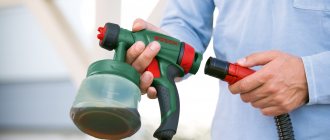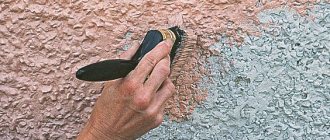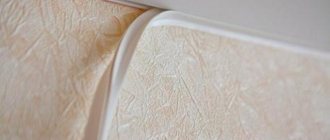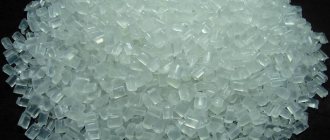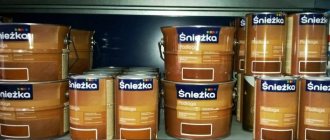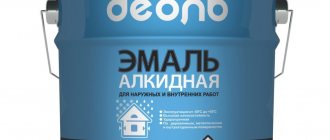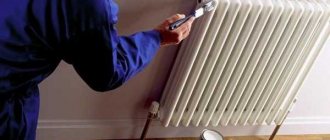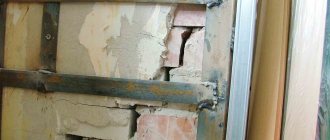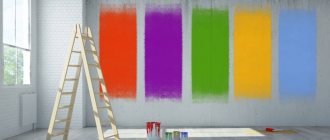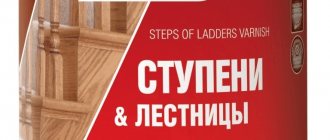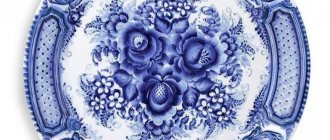Acrylic paint and its features
Acrylic paints are a mixture, the main active component of which is acrylic itself. It is referred to as a polymeric substance formed during the breakdown of acid. To create such a composition, ethanol and chloroform are used in strict proportions. As a result of the connection, a transparent substance is obtained, after which a pigment of the desired shade is added to it.
Acrylic paints frozen on the surface of the palette Source accorel.ru
Useful tips
- If water is used for dilution, it is best to cool it slightly beforehand. Tap water needs to be boiled and allowed to stand. In other cases, the water is filtered.
- Always dilute in very small doses. This applies to all substances, even water.
- It is important to mix thoroughly after each addition of thinner.
- When painting, try to take a small amount of paint and transfer it to a palette or other medium, and immediately close the container with the dye.
- If you run out of any color, don’t rush to get rid of the jar. After thorough washing, it can be used as a small palette. It is also convenient for breeding.
- Thinning the paint not only makes it thinner, but also increases its volume to a certain extent. If there is a little bit of paint missing before completing the painting, you can thin it out slightly. The main thing in this case is not to overdo it.
If it was not possible to “reanimate” dried dyes, then you need to buy a set of acrylic paints. The most accessible and relatively cheap in this segment are sets from.
Source
Options for dealing with dried paints
Dissolving dried acrylic paints can be very difficult. It all depends on the degree of their hardening. They have three classifications:
- thickening. When acrylic begins to thicken. But it’s not even dry yet, just add a small amount of water to it (2.5 cubes from a syringe is enough if it’s art acrylic in a jar), and then stir the composition thoroughly;
- hardening. A well-dried composition can also be corrected with a small amount of water, and for an additional effect, add a small amount of thinner. The main thing is that they are added with water in equal proportions. In this state, the paint should be left overnight, then mixed and used;
- complete drying. The situation is more complicated if the acrylic is completely dry. When the mass has become like a stone, there is nothing left to do but remove it from the vessel and grind it into crumbs until a homogeneous powder. Then pour the mixture into a container and dilute with boiling water. Stir until the lumps are completely dissolved.
Important! When using paints, never leave them outdoors for long periods of time. Because they harden very quickly. As an option, squeeze out a small amount of the desired pigment and tightly close the tube or jar.
In what cases is it necessary to dilute the composition?
Before diluting water-based paint, you should always read the manufacturer's instructions on the packaging. From the name of the product, it becomes clear to most users that it can be diluted with water. But there may be serious restrictions, both in the quantity and composition of the liquid. And a reliable, reputable manufacturer always honestly warns about all cases.
Detailed instructions for using paint from the manufacturer Source homemasters.ru
In order to determine the need to dilute the water-based emulsion, it is enough to pay attention to its thickness. It depends on how much water was placed in the composition during manufacture or how much of it has already evaporated
And paint with the viscosity of thick sour cream usually goes on sale.
The jar with the coloring composition is opened and the contents are thoroughly mixed. This must be done with a wooden oar and for at least 5 minutes. The working density is determined by the flow of the composition from the mixer. If, when lifting the oar above the surface, the paint remains on it in the form of a thick layer, then dilution with water is required. When the liquid quickly flows back into the jar and only a thin layer remains on the surface, then you can immediately work with the composition.
Determining the density of the paletteSource design-homes.ru
The need for dilution is influenced by the method of application to the surface. To work with a brush or roller, the consistency of the product must be sufficiently viscous. This is required to ensure uniform application and eliminate paint smudges on the surface.
When choosing a spray gun, the paint must be brought to a state in which it can easily pass through the nozzle. And to do this, you always need to reduce its viscosity by 1.5-2 times from the original one. If you choose the right proportions, you don’t have to worry that the paint will spread over the surface. High pressure and separation when leaving the nozzle into suspension allows the composition to lie more evenly and densely on the plane. The main thing is not to overdo it with dilution.
There are situations when paint storage rules are violated. This usually happens when the container is not tightly closed. The slightest gap allows evaporation to occur and the water emulsion begins to thicken. If this is not prevented, then the composition becomes completely unusable, simply drying out.
View of paint dried in a canSource pxhere.com
But when trouble is noticed in time, the paint can be saved. Just add water to it and mix thoroughly. If the components have not yet dried, they return to their performance characteristics. And you can safely paint your plans with the composition, following all the manufacturer’s recommendations.
Many beginners do not know what to do if a large amount of water was added during dilution. When, when stirring, the composition flows very quickly from the oar and does not even have time to gain a foothold on the surface. For this case, there are special thickeners that are added in strict accordance with the instructions.
But if time permits, then you can take a simpler path. To do this, take a break from work and leave the paint container open. Evaporation will do its job on its own. It is only necessary to regularly check the degree of consistency. And having found the one you need, you can immediately start painting.
Applying paint to the wall with a rollerSource vyborok.com
Dissolving acrylic paints for painting
Special coloring kits contain small jars with acrylic composition. From time to time they dry out, so to dilute them just add a few drops of clean water to the vessel and mix thoroughly with a stick or the back of a brush.
Dilution of hardened acrylic on a fragment of canvas Source Twitter›ellieaddi
This is done before applying to the canvas and only as the coloring composition thickens. However, we advise you not to dilute the entire composition at once, since upon contact with air it will sooner or later begin to dry out again. Therefore, it is better to remove the required amount of paint onto the palette and mix it with water. This way it will be possible to ensure a longer service life of acrylic.
Paint has frozen on the brush and palette: what to do
If after painting you leave your brush and palette with acrylic paint residues, they will certainly dry out. This can be avoided by washing tools after use. This is often forgotten, but the problem can be fixed.
Slightly hardened acrylic paint on a brush Source severdv.ru
What is the optimal amount of paint to dilute?
Diluting acrylic is a responsible and complex process. The volume of coloring agent in paintings by numbers is small, so when adding water or solvent it is necessary to choose the correct ratio of substances.
Each painter decides individually how much paint he needs to dilute. It is best to test on a damp palette. This will eliminate the possibility of rapid drying and will allow you to calculate the exact dose of materials used.
The process can be carried out directly in a small container. To do this, take a pipette or syringe, add drop by drop and mix the composition thoroughly, observing the result.
In painting, there is a rule for diluting acrylic paints: the thinner is added so that the material does not curl or have lumps.
If too thin, add a little paint.
Everyone decides for themselves how much paint they need to dilute.
Video description
How to dilute acrylic paint?
If you forgot about this point, it is recommended to use white spirit. Just apply it in small portions so as not to damage the bristles of the brush and the surface of the palette. It is better to wipe off paint residues by first wearing gloves. After the procedure for complete removal of pigments, it is necessary to rinse the instruments, wipe dry and leave to dry so that they are ready for the next use.
Important! Use products for diluting coloring compositions carefully, preferably following the advice indicated on the packaging for the special solvent.
The paint has frozen on the canvas, what to do?
If the acrylic paint composition has frozen on the canvas, then it is better not to use solvents or water, because there is a very high risk of ruining the drawing. The dried pigment can be coated with exactly the same shade on top of the previous layer.
Frozen paint on canvas can only be updated with a new layer of acrylic Source vastu.cms-include.ru
The entire canvas is often covered with a new layer of paint if there are obvious flaws.
Acrylic dried in a jar or tube
Since above we did not recommend completely diluting the entire acrylic composition in a jar, we advise you to remove some of it and pour it into the recess of the palette, and then dissolve it with water.
If the paint looks like plasticine
Acrylic paint, which has already thickened but still looks like plasticine, also needs to be diluted. To revive it, just pierce the composition several times with skewers or toothpicks. Pour boiled water into these holes and drain it immediately. You need to repeat this 3-4 times. When pouring water for the last time, close the jar with a lid and leave for 12 hours.
After time, the remaining moisture is drained off and a special solvent is added to the paint. It will help to create the correct consistency of the acrylic composition and rid it of lumps. Accordingly, strokes on the canvas will be easier to apply.
On a note! If the acrylic composition is contained in tubes and it has dried, it will be problematic to remove it with simple pressure. It is necessary to open the tube from the back side or cut along the seam.
Acrylic art paint in a tube Source onlinetrade.ru
How to dilute acrylic paint for an airbrush. Airbrush paints - types and their properties
Paint guru➣Paints➣Types of paints➣
One of the surest ways to give any surface an expressive and unique appearance is to apply images using a special tool called an airbrush.
To ensure that they are of high quality and reliable, it is important to choose the right paints for the airbrush. Let's consider what they are and what features are characteristic of them
Currently, airbrushing is used not only for vehicle decoration. A variety of designs made using an airbrush can be found on walls and furniture, on computer equipment and even on smartphones.
If you have artistic talent, you can make such images yourself. The most important thing is to be very responsible when choosing paints suitable for an airbrush.
It is equally important to choose the right soil for this process. All paints intended for use with an airbrush can be divided into three large groups:
All paints intended for use with an airbrush can be divided into three large groups:
- water-soluble acrylic compounds;
- base urethane paints;
- multicomponent multistage compositions.
It is important to note that they all differ in the method of application. Thus, water-based acrylic products can be sprayed in either one or two stages - depending on the result you want to get.
One of the prerequisites for using urethane paints is varnishing. And multi-component paint compositions are always applied in three stages.
Features of acrylic compositions
One of the most popular and sought-after types of paints and varnishes are water-based acrylic airbrush paints. They are characterized by many advantages, among which are:
- a wide color palette - from neutral translucent shades to rich and bright ones;
- high level of hiding power, eliminating the need for multi-layer paint coating;
- good adhesion, which, in combination with a significant reserve of time for hardening, allows you to create interesting effects when applied;
- absolute non-toxicity due to its water-dispersed base;
- Possibility of use on almost any type of surface.
High-quality water-based acrylic airbrush paints are very convenient for DIY application. They are easy to dilute to obtain the required consistency by mixing with a certain amount of distilled water.
When such paint is completely dry, a thin plastic layer is formed on the surface of the painted product, which is both elastic and quite hard and durable.
To wash off such a coating, it is necessary to use special high-quality chemicals. This feature of acrylic paints is greatly appreciated by many artists, because it makes it possible to create drawings with interesting effects.
Nitroenamels - characteristic features
The main competitor of liquid acrylic paint for airbrushing is nitro enamel, which is very widely used in the design of automotive vehicles.
These tools also have many advantages and disadvantages that make your work much easier:
- They dry several times faster compared to acrylic products.
- With their help it is much easier to apply perfect thin lines.
- Using such tools, you can create translucent fills that look very impressive.
However, nitro paints are not without certain disadvantages. In particular, the tones and shades are less bright and expressive, and their hiding power is far from the best. Using two different colors, it is almost impossible to achieve a beautiful tone - to prevent the appearance of a grayish tint, you should use a light base.
Due to the fact that not all airbrush models are suitable for working with nitro paints, you should carefully study the information indicated on the packaging of the product you have chosen.
Please also note that nitro paint compositions are highly toxic. Therefore, it is recommended to use them in special boxes where high-quality ventilation is provided.
In addition, all work must be carried out in special equipment.
How to thin construction acrylic paint before use
In order to be able to use construction acrylic paint, it must be given the correct consistency. This is true in cases where it has been sitting at home for some time after purchase. You can prepare the composition for finishing work in one of the following ways:
- It is necessary to dilute the paint and water in a ratio of 1: 1. This will enable the paintwork material (paint and varnish material) to lie more evenly on the surface and retain its properties.
- Make the composition in a ratio of 1:2. This consistency is also easy to work with. Paint diluted in this way will thoroughly saturate the roller and lie evenly on the surface.
- Prepare a composition of 1: 5. This way the product is too liquid, which allows you to get slightly visible pigmentation. Using this kind of consistency, defects on the surface are removed and textured details are processed.
Important! Less commonly, a composition of 1:15 is created. It is used only to implement a gradient effect in order to create a smooth transition from one shade to another. Found in modern interior styles.
Interior acrylic paint Source onlinetrade.ru
How can I dilute it?
The following substances are used to thin the paint.
The easiest way to make acrylic paints liquid again is to dilute them with water. Do not use water containing foreign substances or impurities.
It is best to take filtered or settled liquid. It is this water that simply dilutes the dyes and does not affect their physical properties.
But water can affect the brightness and saturation of the paint when applied. Obviously, if you add too much water, the applied paint layer can become completely transparent. Also, after diluting with water, dried paints become slightly cloudy. Those who want to avoid this are recommended to use varnishes.
Specialized solvents
If the paints have dried, then solvents will help to dilute them quickly and relatively efficiently. These products may affect the physical properties of dyes - they may dry faster or slower, or become matte or glossy after drying.
On some solvent labels you can find references to the consequences of use. Therefore, they must be used strictly according to the instructions and not done after the expiration date of the product. Do not violate the rules for storing solvents.
Products such as “Art-acrylic” and “Sonnet” received good reviews. Professional artists recommend using these substances to dilute paints, rather than water. Although the use of the second substance is preferable for most people.
Thinners
They differ from solvents primarily in that they do not have clear instructions. These substances are not always purchased in specialized stores. These can include gasoline, alcohol, kerosene, solvent and even turpentine.
The simultaneous use of water, solvents and thinners is allowed. The first two are often used together.
How to choose acrylic paints that will initially be suitable for work
There are cases when the paints in the package are already sold frozen. This indicates that their storage conditions were not met. Therefore, making the right choice is extremely important. To do this, follow the recommendations below:
- choose only specialized art or construction stores, do not hesitate to ask the seller for a certificate for the product;
- trust only proven brands. It is better not to choose dubious or previously unknown products for serious work;
- If possible, open the jar or shake it off. The liquid composition should be heavier than the dry one.
These simple tips will help you avoid reviving your paint immediately after purchase. Remember that the right material is already 85% of success in working with it.
What to do if the paint for paintings by numbers has dried out?
One of the most popular activities for spending free time has become painting by numbers. These kits are available almost everywhere and are relatively inexpensive. Their technology is simple; children, adults, and the elderly can color them. The paint included in the kits is not the traditional and familiar gouache or watercolor - it is acrylic dye. It has its own characteristics, in particular, it dries quickly. The article below will tell you what to do if this happens.
Solvent or thinner: what composition to use
Thinner and solvent are completely different products, so you need to figure out what composition is used and when.
Acrylic solvent for paints Source onlinetrade.ru
When using a thinner, the consistency of the composition of acrylic paints and varnishes changes without deterioration in quality. Its use is justified if it is necessary to change the density of the coloring composition, as well as the saturation of the shade. Plain water is used as a diluent.
The solvent has other benefits. It is intended for washing off dried acrylic coating residues from objects. Often, when added to a paint composition, the characteristics of the paint change for the worse. To prevent this from happening, you need to use products specifically recommended by the manufacturer.
This is facilitated by their excellent characteristics:
- Wide color palette, expanding the possibilities of choosing the desired shade.
- Ease of use - the paint is easy to apply to the surface and has virtually no odor.
- Short drying time, allowing you to speed up finishing work as much as possible.
- Environmentally friendly - paints of this type do not contain any harmful substances, so they can be used in any premises, including children's rooms and medical institutions.
- Hygiene and easy care - surfaces painted with acrylic compounds do not attract dust and are easy to clean without loss of color intensity.
- A layer of dried paint allows air to pass through, but does not allow water to pass through.
- The painted surface will retain its original appearance and functionality for approximately 10 years.
- The paints are suitable for finishing almost any surface: wood, metal, plaster. They are used for interior work, as well as for painting facades and street structures.
The main components of acrylic paint are:
- pigments that give the required shade;
- binder – polymer acrylic emulsion;
- water.
It is this that guarantees high-quality adhesion of the paint layer to the surface, low water absorption of the resulting film in combination with its ability to pass air.
It is also important what type of pigment was used to prepare the paint, its quantity and quality indicators. This largely affects such indicators as the hiding power of the paint (and therefore its consumption) and its resistance to light.
Stabilizers and special substances are also added to the paint composition, which improve the stability of the paint during storage and ensure ease of use.
Thanks to this composition, paints have high temperature resistance - they do not crack in the cold, almost do not fade and withstand temperature changes well.
After applying paint to the surface, the water present in its composition quickly evaporates, leaving a plastic film on the surface that adheres firmly and reliably protects the structure from external influences.
Acrylic paints are usually sold in the form of a thick mixture that must be diluted before use.
To obtain a paint composition of a density convenient for use, substances such as thinners and solvents are used. Thinners are substances already included in the base paint composition, but without pigments. The addition of these substances does not adversely affect the quality of the final coating, but makes the paint less thick. Moreover, after it dries, the properties of the paint layer do not change, and polymerization occurs just as quickly.
Solvents are used to thin paint and remove it from surfaces and tools. As a result of this effect, the drying time of the paint is reduced, but its properties change (most often worsen).
Special products are used to obtain the required paint consistency. Recommendations for their use are usually provided by the paint manufacturers themselves. With the help of these means, the applied layer of paint can be given properties such as dullness, gloss, and a very durable top layer can be made.
In order to decide what exactly to dilute the paint with, you need to think about what specific performance indicators are more important to you. To do this, you need to know what exactly needs to be painted.
And after that, decide on what basis to prepare the solution:
- if you plan to paint walls or ceilings in a room, then it is better to use water as a diluent;
- if you need to paint wooden structures or furniture, then it is advisable to dilute the paint with special agents with certain properties;
- if you need to paint metal, you can use ordinary solvents.
Where is the best place to paint?
Experts have proven that it is best to dilute paints on a separate surface and take the amount of product that is needed, and not the entire volume at once. If you use all the solvent and leave the composition in a closed jar after preparation, the paint may lose its properties and lose its brightness.
Thinning acrylic paint is done on a palette or other surface Source imgswipe.com
Therefore, the ideal place to revive a dried piece of paint is a palette, cardboard, or any horizontal surface. In such places it is easier to adjust the amount of pigment components in order to choose the most correct shade.
Recommendations from experts
Before diluting paints for painting paintings by numbers, you need to pay attention to the advice of professionals and, if necessary, use them:
- To dilute dried acrylic, use only clean, cooled water, without additives or impurities, preferably distilled. If it is taken from the tap, it is subjected to boiling and settling. Some people living in the private sector take liquid from their own well or well. It cannot be used in this form; the water is not only settled, but also filtered.
- Strictly observe the proportions so as not to spoil the original properties of the paint.
- Add thinner in small portions, stirring constantly.
- The wrong choice of solvent leads to a change in the structure of the coloring agent and can negatively affect the quality of the painting.
- Testing is required before the main breeding procedure.
Storage recommendations
By following the storage tips below, you will never have problems with paint drying out:
- after use, be sure to tighten the lids of jars or tubes tightly, then double-check;
- make sure that there are no cracks or holes in the container where the coloring composition is stored; if there are any, it is better to move the paint to another container;
- store acrylic at room temperature, since in cold or hot conditions it tends to harden ahead of time;
- do not mix paints from different manufacturers, even if they are extremely similar in shades. Most likely, this combination will dry out very quickly.
Paints that are too dry, that have stood for a long time and have never been used, often freeze tightly. Therefore, it is better to avoid wasting time trying to dissolve them.
Tubes with acrylic paints Source aldopolidano.com
How to prevent paint from drying out?
Polymerization of the composition occurs after moisture evaporates. The resin begins to harden, and the pigment, coming into contact with it, forms a uniform, even coating. And if the composition requires repeated dilution, the shade often becomes duller, and the quality of the coloring may also suffer. This feature imposes certain requirements on water. It must be cool and clean. The liquid should be added in small portions until the desired uniform consistency is obtained. The paint must be thoroughly stirred after each addition of water. To prevent paint residue from drying out, you need to take some measures:
- hermetically seal the container with the acrylic composition, as this will slow down the polymerization;
- try to prepare the paintwork in portions, that is, little by little in a separate container, as it dries out quite quickly;
- Avoid paint on the edges of the container to prevent the container from sticking to any surface.
Do not allow paint to dry on instruments. If the brushes are not immediately washed in soapy water, they will become unsuitable for further use.
How to restore dried acrylic
Acrylic is no less popular among artists. These paints, packaged in small metal tubes, often harden and have to be resuscitated. Those who encounter this phenomenon for the first time do not know what to do. The problem is very easy to solve. But first you need to decide on the condition of the paints. At first glance it may seem that they have dried out, but in fact they have simply thickened.
See also
How to make paints and tinting according to the colors chosen for the interior
If with a certain amount of force you can catch a little of the mixture with a brush, it has simply frozen. In this case, the composition should stretch a little. You can soak the paint very quickly with a few drops of water or a special thinner.
Expert opinion
Zakharova Irina Yurievna
Cleaning professional with 15 years of experience. Our best expert.
Ask a Question
When the substance resembles plastic and is taken in a whole piece, then it has already dried. Solving this problem is more difficult. If a piece can be written on paper, then it can still be restored. For this, boiling water and a solvent are used.
Types of drying oil in oil paints
One type of paint can be used to treat indoor surfaces, the other - strictly for external work, since it has toxic emissions (pungent odor).
The method of application depends on the type of drying oil:
- The first includes natural drying oil made from hemp, linseed, and soybean oil. It is marked MA-021, and is suitable for painting windows, doors and other room elements. The exception is the floor and ceiling, because the oil base does not allow moisture to pass through, thereby disrupting proper air exchange in the room.
- The second type is a composite drying oil, created by mixing solvent and oil. This drying oil is diluted with turpentine, white spirit, gasoline, solvent, it is characterized by the presence of a strong odor, and the fumes are harmful to the body. Although paint with a similar composition costs less, doing home repairs with it is contraindicated. Indicated by marker MA-025.
After reading the label and composition, choose either a drying oil based on linseed oil, or buy a suitable solvent.
How to properly dilute and restore dried acrylic
After several years, stains, cracks or other imperfections may appear on the painted wall, spoiling the appearance. In this case, it is better to partially renew the surface with the same paint. But after it was taken out of the storage room, it was discovered that the material had frozen. This problem can be resolved with hot water. To do this, pieces of paint can be pierced with a needle and poured with hot water. The procedure is repeated several times. First, the substance warms up. In this case, the water will have to be changed several times. This happens until the building material becomes homogeneous.
Solvents can be used in a similar way. The second option is more preferable, because heating the paint spoils its characteristics.
Dilution features
The basis of oil paint is pigment mixed with drying oil until smooth. While the mixture is not being used, the heavy powder pigment can settle, the middle hardens, and oil accumulates on top, so you need to thoroughly stir or shake the jar before working. If you need to bring the coloring substance to a more liquid state, first answer two questions:
- What are you going to use the thinned paint for: on its own to paint the surface or as a primer?
- What type of drying oil is the composition mixed with?
It is important for us to decide on these points, since oil paint should be diluted with a substance similar to what is in the composition.
If a can of paint and varnish material has been standing for a short time after opening, then the thickening is eliminated by adding drying oil.
However, this substance differs in the manufacturing method, so if you choose the wrong one, you risk ruining the entire coloring material. When it is necessary to revive heavily compacted paint, you cannot do without a solvent. We also add it if we are preparing a primer.
